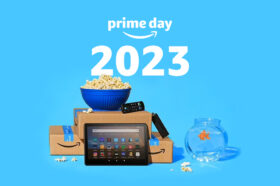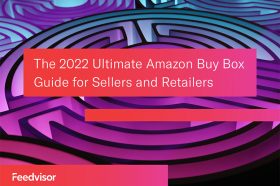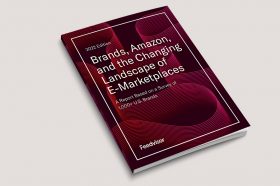Resources - Blog
What Are Amazon PPC Ads?

Stay on top of the latest e-commerce and marketplace trends.
Whether you are a veteran of the platform or a newcomer to selling and advertising on Amazon, every brand and retailer needs to have a deep understanding of Amazon pay-per-click (PPC) and how this model enables businesses to reach more consumers.
In order to maximize results through these efforts, though, an Amazon PPC strategy must work holistically with your approach to pricing as well as your overall strategies for building Amazon Advertising campaigns that drive sales. Using AI-driven technology like Feedvisor can provide next-level insights into your operations, giving your business the data it needs to fully optimize PPC campaigns on Amazon.
Learn more about how pay per click works and the important metrics brands and retailers use to gauge Amazon PPC campaign success.
What Is Amazon PPC and PPC Advertising?
At its core, Amazon PPC is a simple yet powerful advertising model that only requires brands and sellers to pay fees to Amazon when shoppers click on their ads.
Amazon PPC utilizes an auction-style system where businesses bid on relevant keywords. The winner with the highest bids will see their Sponsored ads appear in their chosen placement across the platform.
Advertising must meet several criteria before they can run PPC campaigns on Amazon, including having an active seller account, the ability to ship products throughout the U.S., as well as Buy Box eligibility for brands and sellers that want to take advantage of Sponsored Products.
Businesses have significant control over their Amazon PPC management, with the ability to hone in on specific keywords, target key consumer demographics, as well as set maximum amounts for bids and CPCs (costs-per-click). Having access to AI-driven technology and Amazon experts like Feedvisor offers brands and sellers even deeper insights into the driving factors behind creating winning PPC strategies.
Is Amazon Advertising Worth It?
Advertising on Amazon is no longer a luxury — it is a necessity for brands and retailers that want to see sales increasing while building brand awareness among consumers.
According to Feedvisor’s exclusive 2022 survey of more than 1,000 U.S. brands, 83% of brands now advertise on Amazon’s platform. This is because, simply, advertising works. Brands understand the importance of advertising to ensure their discoverability on a competitive marketplace, and one which sponsored placements are quickly outpacing organic. Indeed, more businesses now know just how important full-funnel advertising is for accomplishing a number of goals at different stages of the customer journey.
Overall, 68% of brands told us that advertising was crucial for driving brand awareness, while 65% said it was a major factor for acquiring new customers. Additionally, 60% said they advertise to drive sales, while 54% use it to gain market share over their competitors.
Although advertisers are investing more into their strategies, they are also seeing great results both in sales and in improved organic rankings, showing the need for paid advertising on Amazon. Looking back at Prime Day 2021, Feedvisor customer data shows that, despite ad spend growing by 94% across categories for this year’s event, ad sales continued to grow as well, up nearly 26% across categories in 2021 after growing by 36% in 2020.
By having the right solutions and strategies in place for balancing ad costs with driving profitable growth, advertising becomes more than worth it for brands and retailers on Amazon.
Organic Sales vs. PPC Sales
When analyzing your operational data and the success of your advertising strategies, it is important to know how both your paid and organic efforts are working and the different factors driving results on each channel.
Organic Sales: To understand the performance of your Amazon SEO strategies and how search traffic is impacting results, businesses look to organic sales. These are sales attributed to customers who discovered and purchased products that were not given better visibility on Amazon’s search results via a paid ad placement.
PPC Sales: On the other end of the spectrum, paid search and Amazon PPC success can be determined through PPC sales. These are sales attributed to customers who discovered and purchased products after clicking on an advertisement in Amazon’s search results.
Unlock the Secrets to Optimizing Amazon SEO: Download Playbook
Amazon PPC Ad Types
For advertisers, there are three key ad types they can use to create Amazon PPC campaigns.
Amazon Sponsored Brand Ads: Use these CPC ads to showcase logos, custom headlines, and array of products through placement across the platform on relevant shopping results.
Amazon Sponsored Display Ads: This self-service display solution enables businesses to create and run campaigns through ads on product pages as well as more dynamic media placement through resources like Fire TV and Prime Video.
Amazon Sponsored Product Ads: This CPC-driven ad promotes individual product listings that appear alongside organic listings in Amazon’s search results.
Amazon Keyword Match Types
When utilizing Amazon PPC and your campaigns for relevant keywords, it is crucial to know the difference between the types of matching phrases that ads can be placed on.
Exact Match: As the name suggests, exact match only has ads appear for shoppers who search for that specific term, with no additional words added before or after.
Phrase Match: For this type, ads can appear when a user searches for the exact keyword or if that exact keyword appears among other words that a shopper inputs during their search.
Broad Match: The least restrictive, this type will allow ads to appear whenever a shopper’s search term contains all of the keyword terms or closely-related variations like plural forms or acronyms.
Advertising Cost of Sales (ACoS)
Another important metric to consider when optimizing your advertising on Amazon is ACoS. This crucial stat is calculated by taking your total ad spend, dividing that by total ad sales multiplied by 100.
A lower ACoS means you are spending a lower percentage of your sales on advertising, while a higher ACoS means a greater portion of your sales is being spent on ads. Optimizing your strategies to balance profits and ACoS is critical for creating successful advertising campaigns.
Amazon PPC Strategies for Beginners
If you are just beginning on your Amazon PPC journey, try a few of these optimization tips that will enable you to kickstart sales.
- Analyze your operational and advertising data to determine which metrics mean the most to your business goals.
- After setting data-informed goals, start strategizing around Sponsored Products and implementing these highly effective ad types for reaching more customers and driving higher conversions.
- Discover new growth strategies and optimization opportunities by working with an AI-driven platform and team of experts like Feedvisor, who can help you pinpoint exactly which keywords and ad types will accelerate your growth and advertising success.
Final Thoughts
PPC campaigns are integral to successful Amazon Advertising strategies, requiring brands and sellers to balance ad costs and many significant factors in order to find the optimal approach for reaching shoppers.
In addition to understanding how PPC works, businesses must also have the right insights into their operations, using data-driven solutions like Feedvisor’s AI-driven platform to make the right decisions for which products to focus on and how best to invest their advertising budgets.




